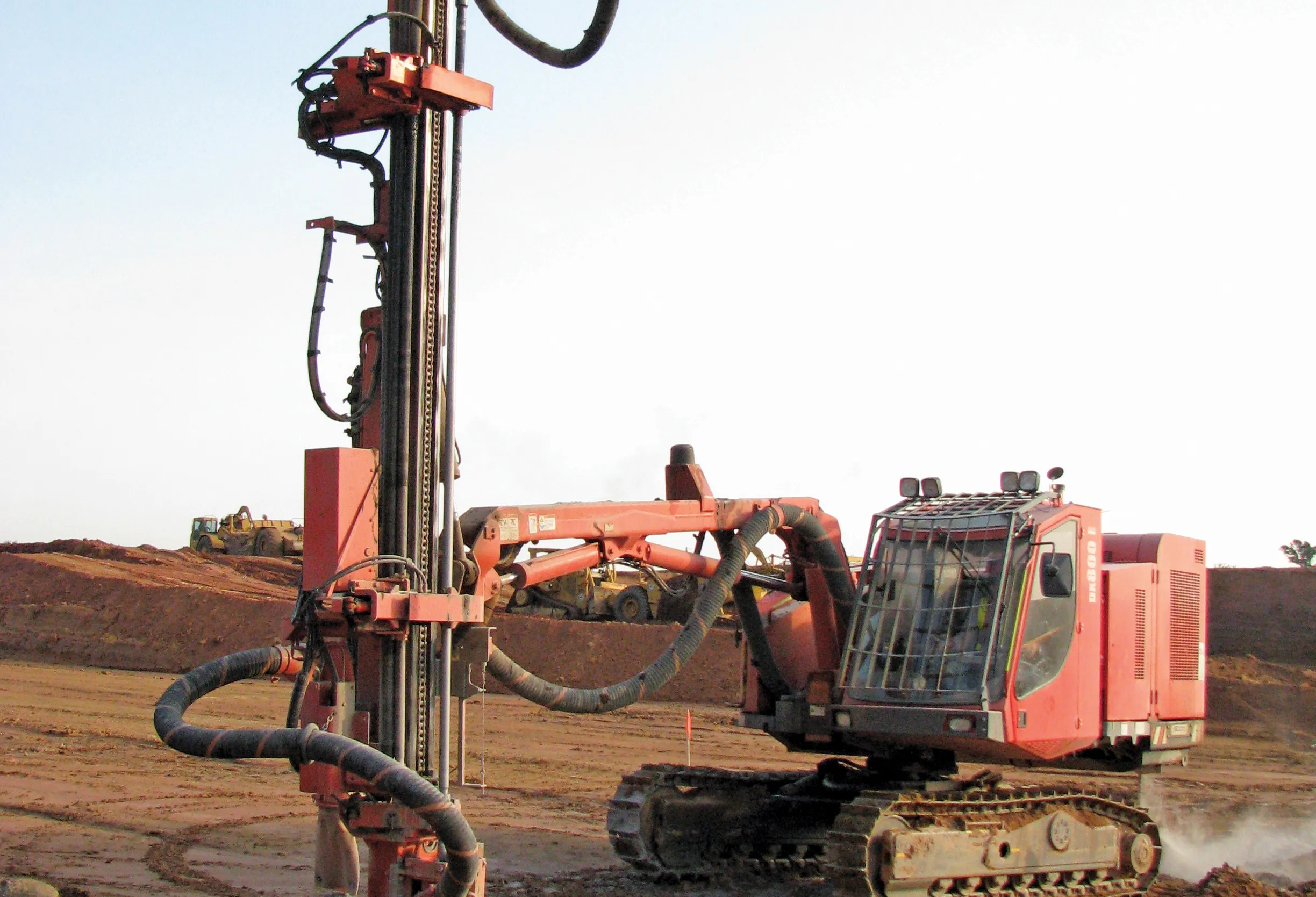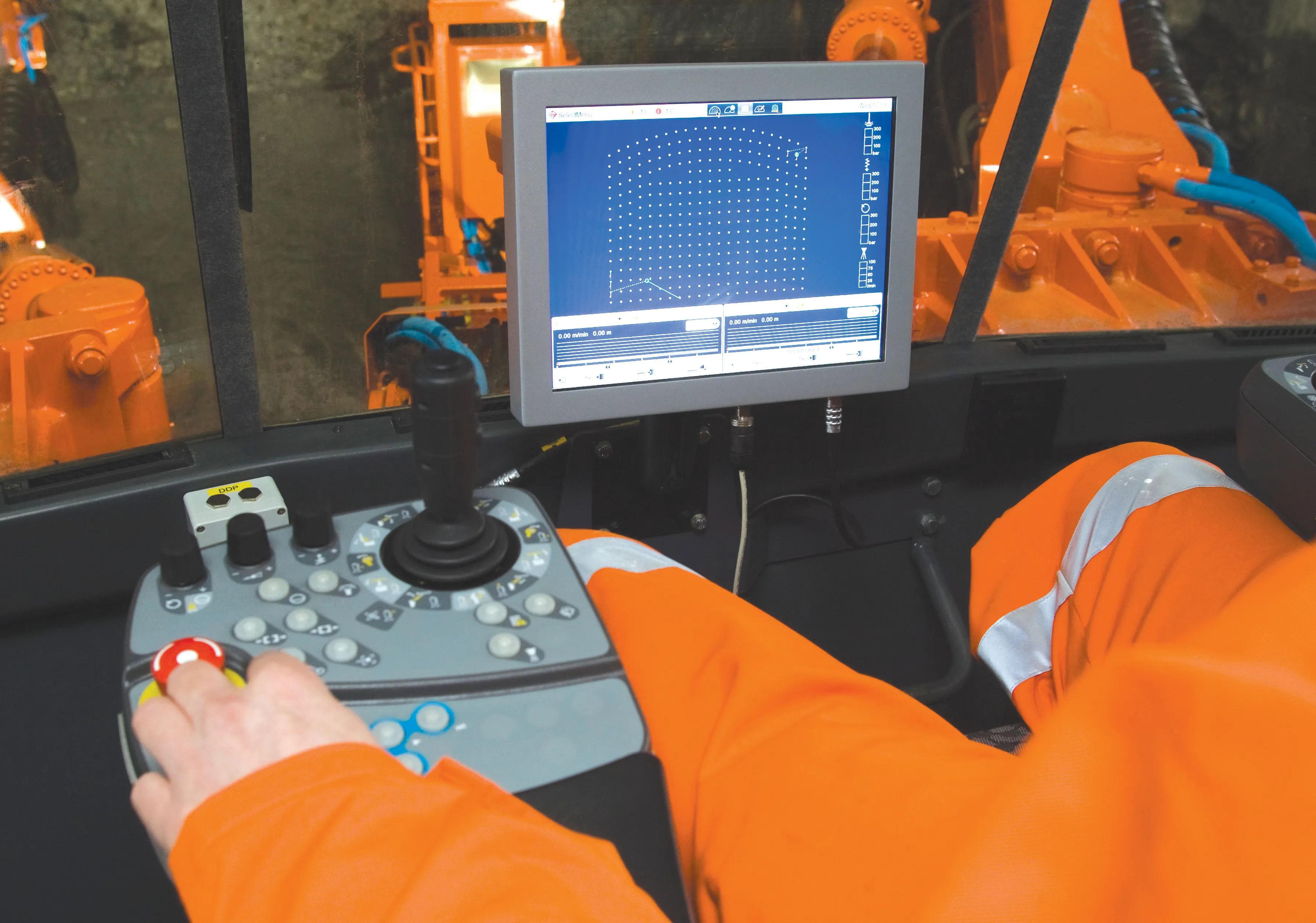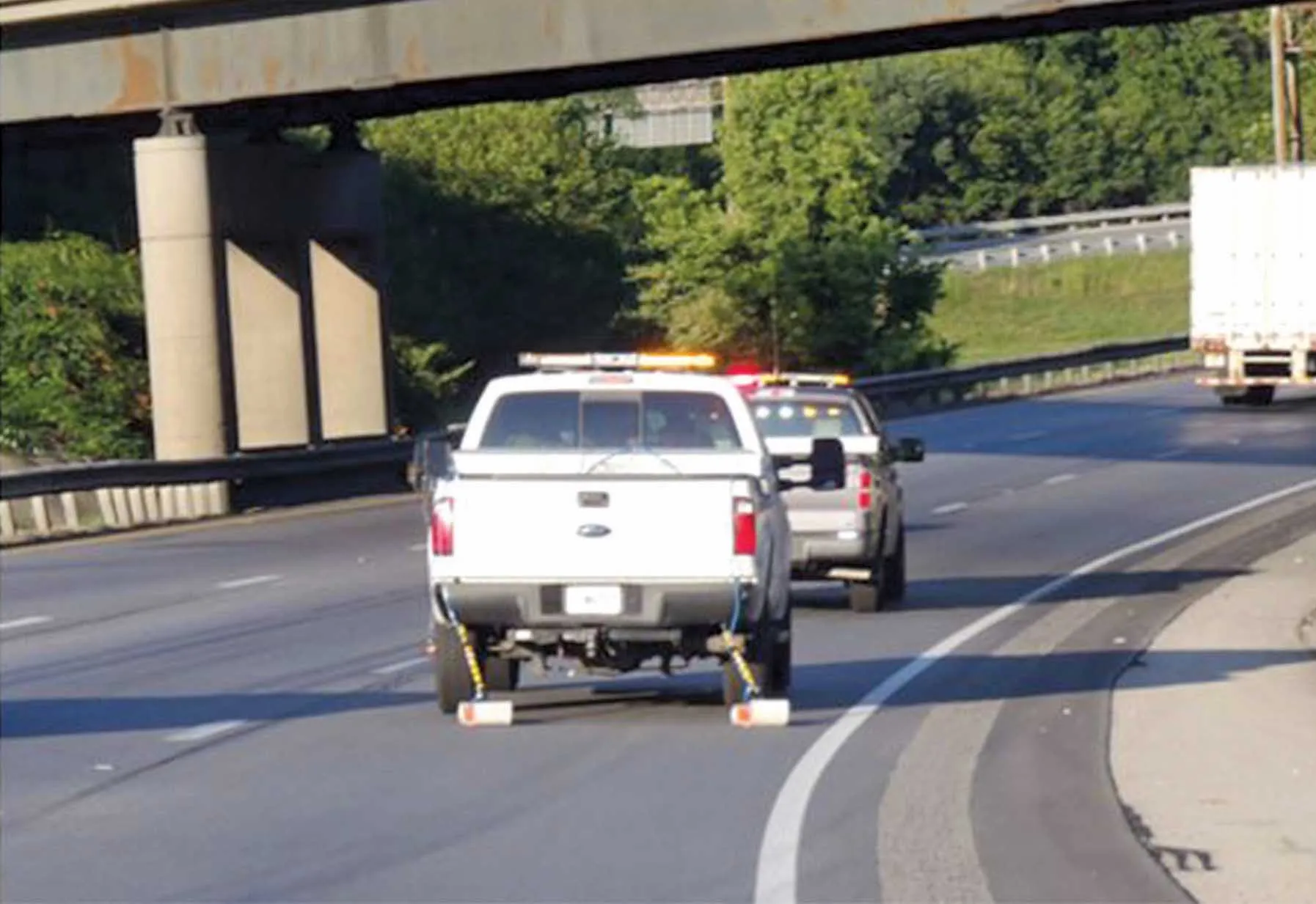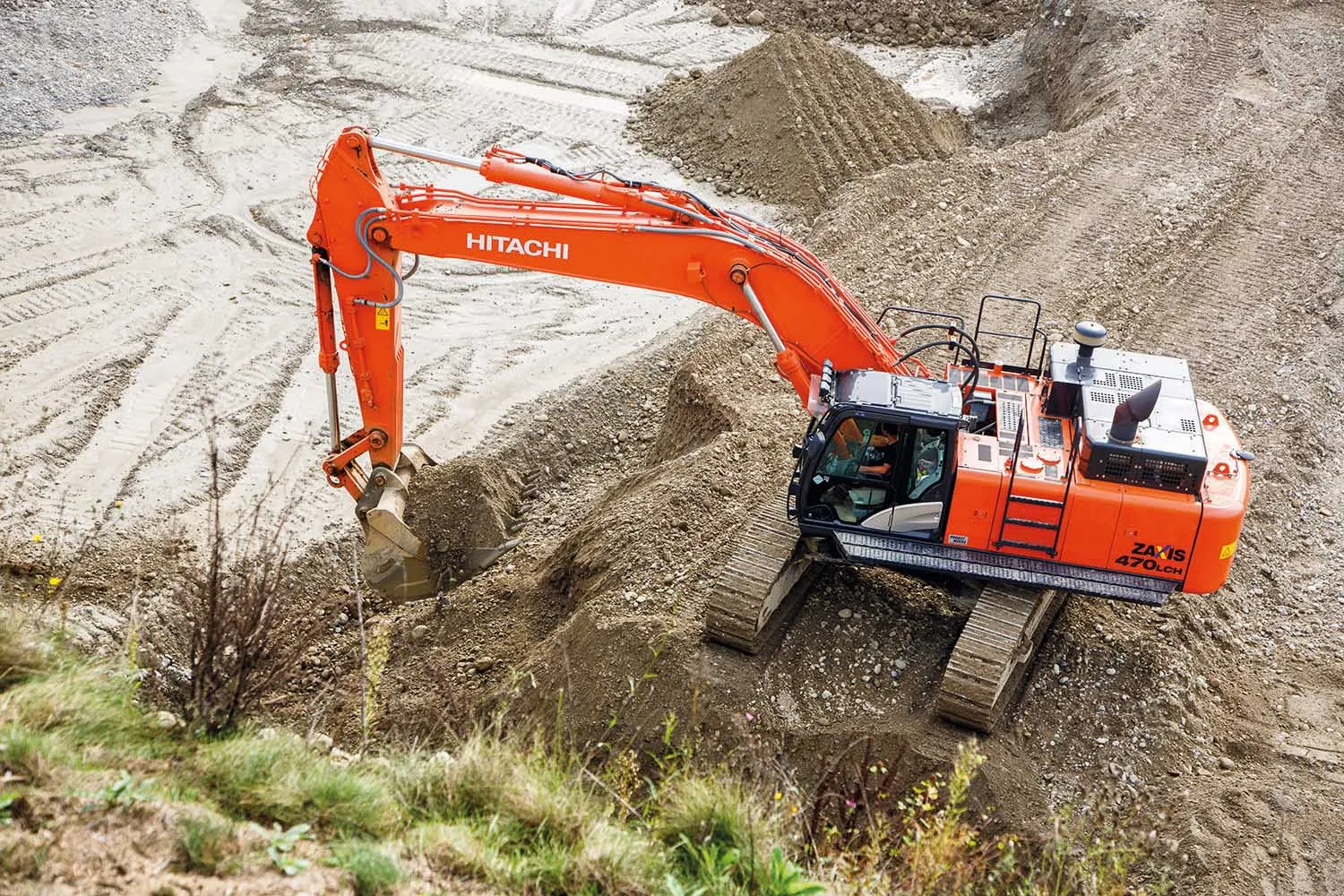Three Sandvik DX800 top-hammer hydraulic drills are said to be playing a key role in developing the new US$92 million Norfolk Southern Intermodal Site within Charlotte Douglas International Airport in the US state of Georgia. The site, in the Georgia town of Austell, encompasses nearly 200 acres of ground, with a granite rock formation lying less than 100m away from a very active runway of the very busy airport. The ground will be turned into an ‘intermodal yard’, meaning that cargo carried there on Norfolk
February 18, 2013
Read time: 3 mins

Three 325 Sandvik DX800 top-hammer hydraulic drills are said to be playing a key role in developing the new US$92 million Norfolk Southern Intermodal Site within Charlotte Douglas International Airport in the US state of Georgia.
The site, in the Georgia town of Austell, encompasses nearly 200 acres of ground, with a granite rock formation lying less than 100m away from a very active runway of the very busy airport.
The ground will be turned into an ‘intermodal yard’, meaning that cargo carried there on Norfolk Southern railroad cars will be off-loaded for further transport on tractor-trailers and vice-versa. It is estimated that over 200,000 cargo containers will be transferred in the yard each year, and by 2013 the intermodal project will replace a smaller operation in Charlotte, North Carolina.
Fulfilling a vital part in the project is Austell-based site infrastructure contractor Plateau Excavation. For these works, which began in early May 2012, Plateau is acting as the subcontractor to the Illinois-based construction and management firm, Milord Company.
In order to deliver their side of the project, Plateau Excavation is utilising over 50 pieces of heavy equipment on the scheme; including the three Sandvik DX800 hydraulic drills being used to bore directly into the granite shelf. The drills themselves are owned and operated by a Plateau Excavation subcontractor, Tennessee-based LK Gregory Construction Inc. The DX800's were supplied and serviced by the Buford, Georgia dealership, of Charlotte-based ASC Construction Equipment USA Inc.
“Although Sandvik was fairly new for us, we knew there was an excellent opportunity with Plateau Excavation,” said Jack Evans, ASC’s general manager at Buford.
The Sandvik DX800's were used by Plateau Excavation for initial rock excavation, before the firm turned to a vast array of machinery that it has at its disposal. Given constricted market conditions, Plateau Excavation is said to have discovered alternative methods of saving time and capital by crushing the blast rock into usable material onsite. Moving in a portable crushing operation, Plateau Excavation were able to reduce the size of the rock into everything from rip-rap, 34’s, 57’s, and aggregate base suitable for use on road beds and building pads. Once the granite was drilled and blasted, Plateau used a fleet of excavators to tear through the rock, channelling it along the fleet of articulated and off-road trucks to get the shattered rock to the crushing operation less than 305m away in order to expedite production.
On the Plateau Excavation project, the trio of DX800 rigs is averaging 213 to 274 borehole metres per day, with the routine being to have the drills bore for one or two days with the grades of the project spanning from .3 to .6 m in slopes to holes running 15.2 to 18.3m in the centre line of the future rail.
Averaging between 6,858 to 9,144m of blasted rock per blast is said to continually allow LK Gregory to stay in line with Plateau’s production standards.
The site, in the Georgia town of Austell, encompasses nearly 200 acres of ground, with a granite rock formation lying less than 100m away from a very active runway of the very busy airport.
The ground will be turned into an ‘intermodal yard’, meaning that cargo carried there on Norfolk Southern railroad cars will be off-loaded for further transport on tractor-trailers and vice-versa. It is estimated that over 200,000 cargo containers will be transferred in the yard each year, and by 2013 the intermodal project will replace a smaller operation in Charlotte, North Carolina.
Fulfilling a vital part in the project is Austell-based site infrastructure contractor Plateau Excavation. For these works, which began in early May 2012, Plateau is acting as the subcontractor to the Illinois-based construction and management firm, Milord Company.
In order to deliver their side of the project, Plateau Excavation is utilising over 50 pieces of heavy equipment on the scheme; including the three Sandvik DX800 hydraulic drills being used to bore directly into the granite shelf. The drills themselves are owned and operated by a Plateau Excavation subcontractor, Tennessee-based LK Gregory Construction Inc. The DX800's were supplied and serviced by the Buford, Georgia dealership, of Charlotte-based ASC Construction Equipment USA Inc.
“Although Sandvik was fairly new for us, we knew there was an excellent opportunity with Plateau Excavation,” said Jack Evans, ASC’s general manager at Buford.
The Sandvik DX800's were used by Plateau Excavation for initial rock excavation, before the firm turned to a vast array of machinery that it has at its disposal. Given constricted market conditions, Plateau Excavation is said to have discovered alternative methods of saving time and capital by crushing the blast rock into usable material onsite. Moving in a portable crushing operation, Plateau Excavation were able to reduce the size of the rock into everything from rip-rap, 34’s, 57’s, and aggregate base suitable for use on road beds and building pads. Once the granite was drilled and blasted, Plateau used a fleet of excavators to tear through the rock, channelling it along the fleet of articulated and off-road trucks to get the shattered rock to the crushing operation less than 305m away in order to expedite production.
On the Plateau Excavation project, the trio of DX800 rigs is averaging 213 to 274 borehole metres per day, with the routine being to have the drills bore for one or two days with the grades of the project spanning from .3 to .6 m in slopes to holes running 15.2 to 18.3m in the centre line of the future rail.
Averaging between 6,858 to 9,144m of blasted rock per blast is said to continually allow LK Gregory to stay in line with Plateau’s production standards.








